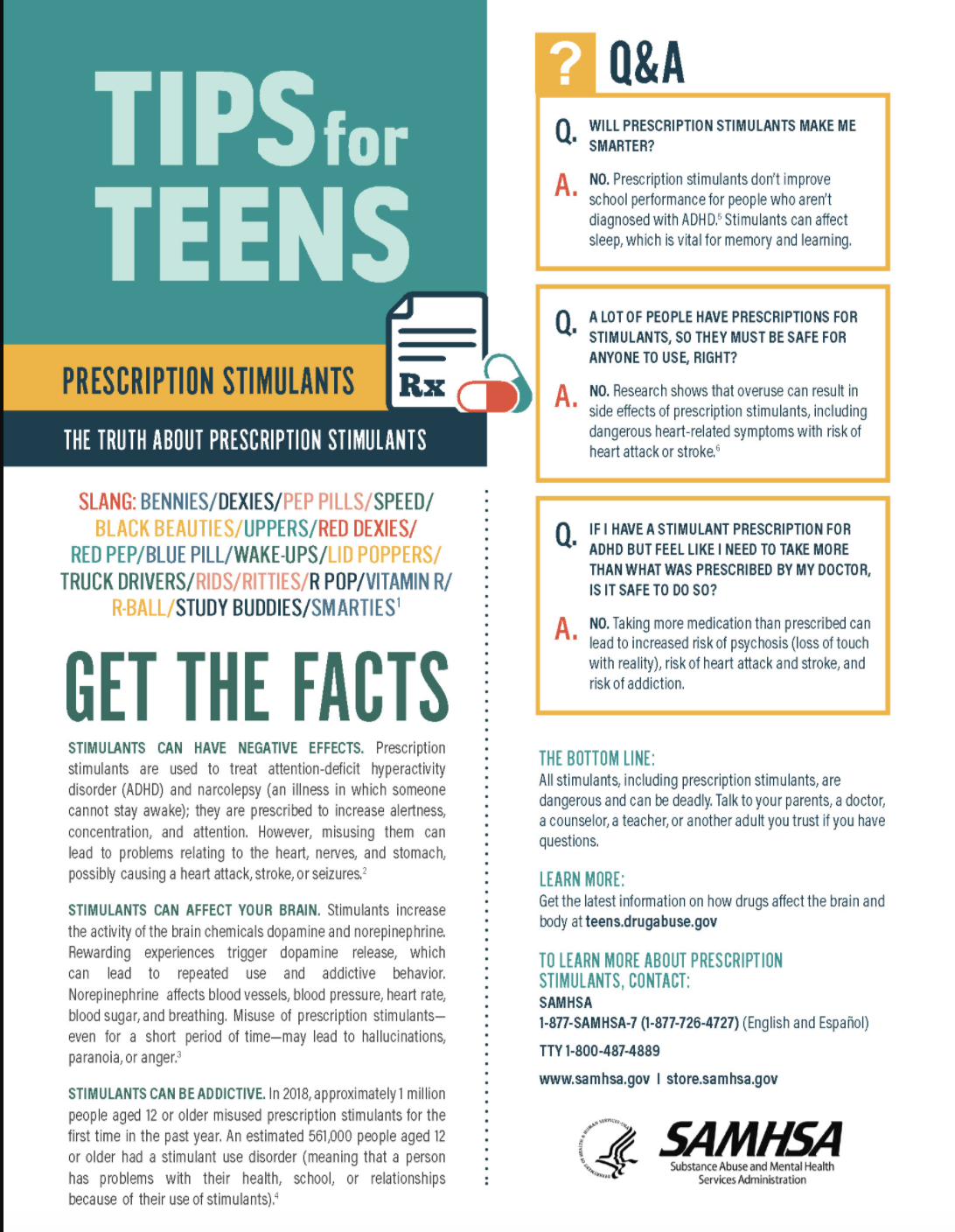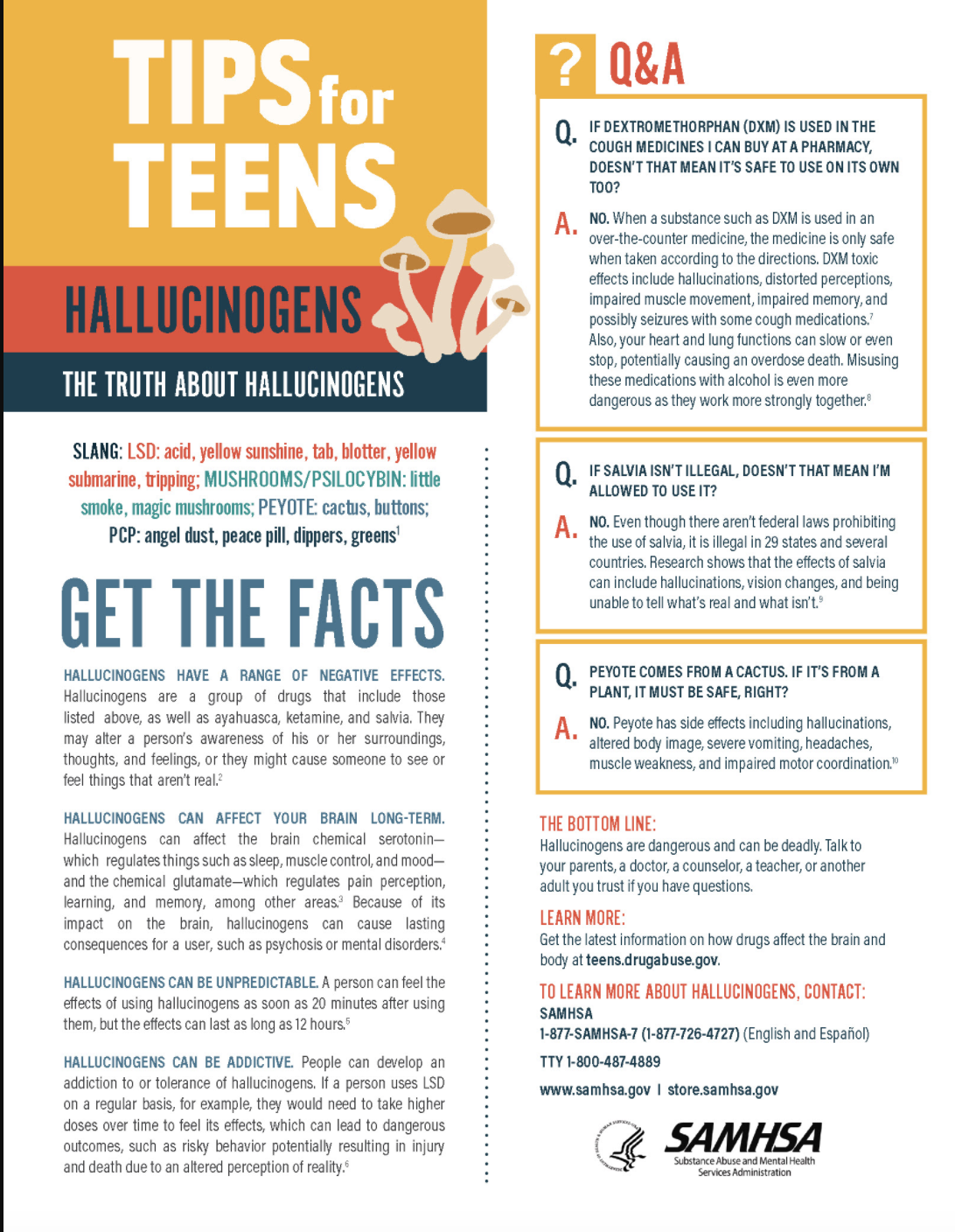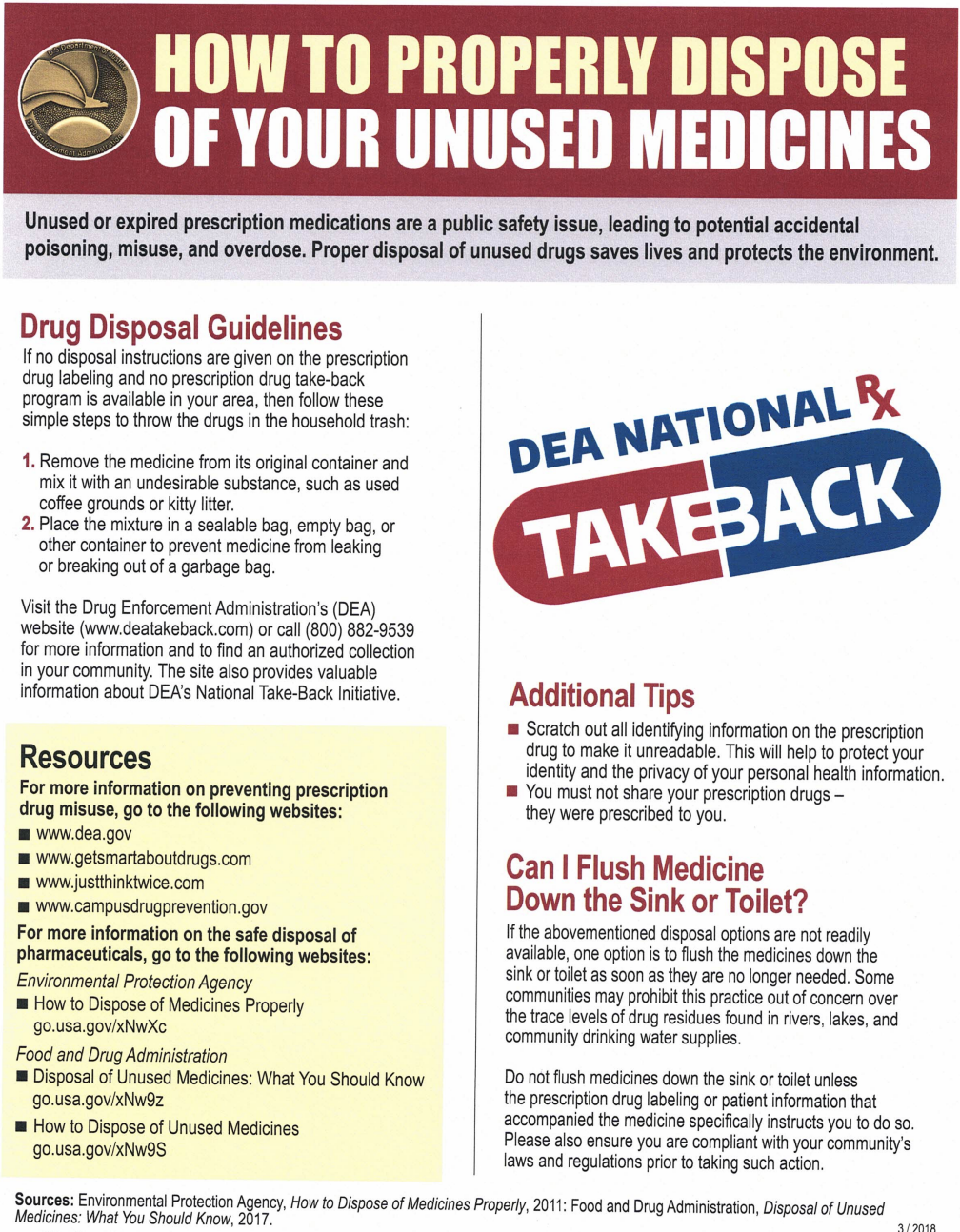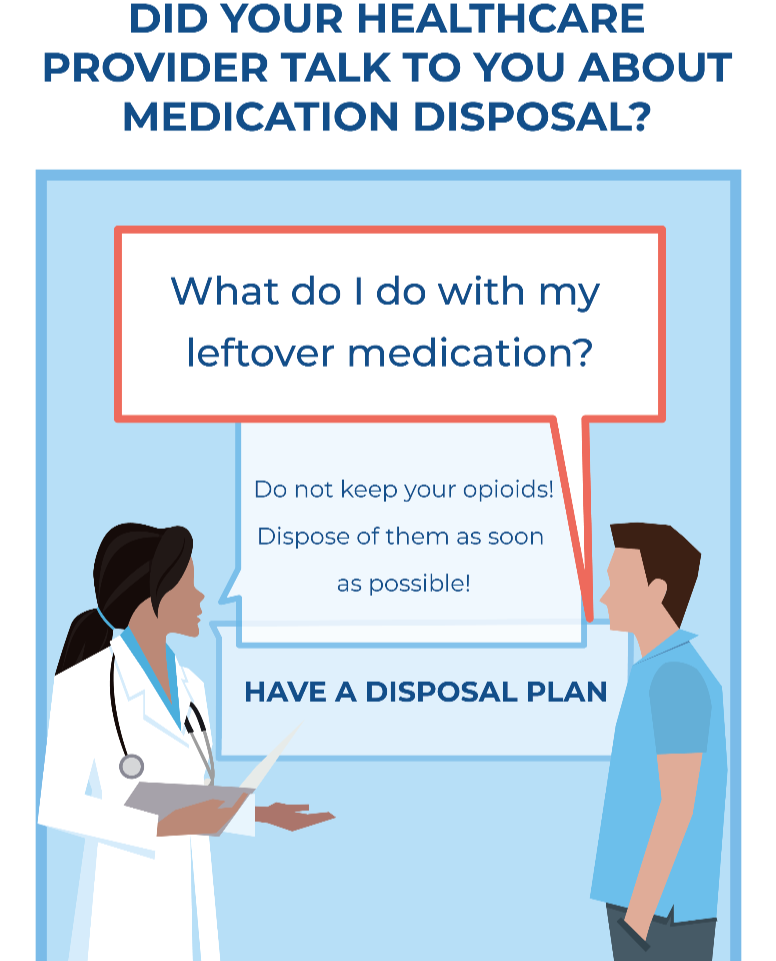Prescription Drugs and Opioid Abuse Prevention
OPIOIDS AFFECT YOUR BRAIN.
Opioids are a class of drugs that include the illegal drug heroin, synthetic opioids such as fentanyl, and pain relievers available legally by prescription, such as oxycodone, hydrocodone, codeine, morphine, and many others.1 They affect both the spinal cord and brain to reduce the intensity of pain-signal perception as well as brain areas that control emotion.2 They can also affect the brain to cause euphoria or “high”.
OPIOIDS AFFECT YOUR BODY.
Opioids slow down the actions of the body, such as breathing and heartbeat. Even a single dose of an opioid can cause severe respiratory depression (slowing or stopping of breathing), which can be fatal; taking opioids with alcohol or sedatives increases this risk.
OPIOIDS ARE ADDICTIVE.
Even though heroin is highly addictive, more people struggle with addiction to prescription pain relievers. Many young people who inject heroin report misuse of prescription opioids before starting to use heroin.
OPIOIDS CAN KILL YOU.
Drug overdose is the leading cause of accidental death in the United States, with 68,690 drug overdose deaths between March 2017 and March 2018.7 More than 46,000 of those deaths involved opioids.
OPIOID ADDICTION IS TREATABLE.
Methadone, buprenorphine, and naltrexone are medications that are FDA-approved to treat opioid use disorder. For more information, visit https://www.drugabuse. gov/publications/research-reports/medications-to-treat-opioidaddiction/efficacy-medications-opioid-use-disorder.
KNOW THE LAW.
Heroin is illegal and addictive. If you are caught with prescription opioids that are not yours, you can be imprisoned, fined, or both.
KNOW THE RISKS.
Using opioids repeatedly can lead to higher tolerance. Other risks include addiction and overdose death.
LOOK AROUND YOU.
A recent study found that 38.5 percent of the people who misused prescription pain relievers got them from a friend or relative for free; 34.6 percent were prescribed the medication by one doctor.
KNOW THE SIGNS
How can you tell if a friend is using opioids?
Side effects of opioid use include: • Constipation, nausea, vomiting, and dry mouth; • Sleepiness and dizziness; • Confusion; • Decreased breathing; and • Itching and sweating. Behavioral signs and symptoms of opioid addiction include: • A change in peer group; • Carelessness with grooming; • Decline in academic performance; • Missing classes or skipping school; • Loss of interest in favorite activities; • Changes in eating or sleeping habits; and • Deteriorating relationships with family and friends.
THE BOTTOM LINE:
Many people are prescribed opioids out of medical necessity, but opioids can still be dangerous and addictive. Even if someone is prescribed one of these medications— such as hydrocodone, oxycodone, and morphine—misuse of these substances is rampant. Talk to your parents, a doctor, a counselor, a teacher, or another adult you trust if you have questions.
LEARN MORE: Get the latest information on how drugs affect the brain and body at teens.drugabuse.gov.
TO LEARN MORE ABOUT OPIOIDS, CONTACT: SAMHSA 1–877–SAMHSA–7 (1–877–726–4727) (English and Español) TTY 1–800–487–4889 www.samhsa.gov store.samhsa.gov
When the Prescription Becomes the Problem
Almost 36 percent of all U.S. opioid overdose deaths involve a prescription opioid. Overdose deaths involving prescription opioids have increase by about 5 times since 1999. From 1999 to 2017, more than 200,000 people died from overdoses related to prescription opioids, with more than 17,000 overdose deaths involving prescription opioids occurring in 2017.
Take Action and Help
Whether you are a healthcare provider, first responder, law enforcement officer, public health official, or community member, the opioid epidemic is likely affecting you and your community. No matter who you are, you can take action to end the opioid overdose epidemic ravaging the United States. We all have a role to play on the frontlines of this fight—it starts with addressing prescription opioid misuse, abuse, and overdose.
Learn more about prescription opioids so you can help those at risk for opioid use disorder and overdose in your community.
Help those struggling with addiction find the right care and treatment. Anyone who takes prescription opioids can become addicted and help is available if you or someone you know is battling opioid use disorder.
Spread the word and increase awareness in your community about the risk and dangers of prescription opioids.
State and local health departments and community organizations can also take part in the Rx Awareness campaign and use the tested campaign materials and resources to launch campaigns, support local prevention activities, and raise awareness about the risks of prescription opioids.
Read the Executive Summary for an overview of the campaign Cdc-pdf[PDF – 5 MB], and learn how to launch the campaign in your local community.
For more information visit the CDC RXAwareness Website







